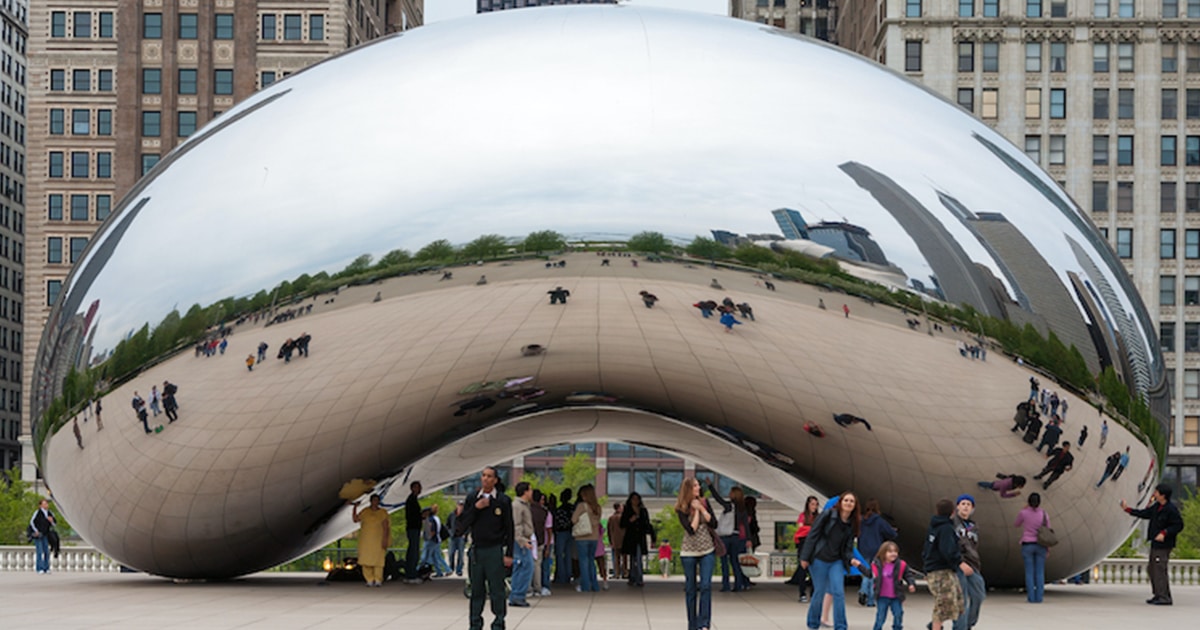Giant name in the art world: Who is Anish Kapoor?
British Indian sculptor Anish Kapoor is known for his passion for abstract forms, rich colors, and polished surfaces. Many of his works have made a big impact on the art world.

Specializing in installation art and conceptual art, the artist was born on March 12, 1954, in Mumbai, India. Having different heritages from his Punjabi and Iraqi-Jewish parents, Kapoor moved to Israel with his brother in 1971 and began studying electrical engineering. However, he decided to become an artist because he was bad at mathematics. For this, he moved to England in 1973 and studied at Hornsey College of Art (1973-77) and MA at Chelsea School of Art (1977-78).
Kapoor is known for his geometric or biomorphic sculptures in the late 1970s, using simple materials such as granite, limestone, marble, pigment, and plaster. The series "1000 Names", created between 1979-1980, emerged with saturated pigments and striking architectural forms, consisting of powder pigments poured on the floor or wall and abstract geometric forms coated with them.
In the 1980s and 90s, Kapoor became increasingly known for his biomorphic sculptures and installations made from materials such as stone, aluminum, and resin that seemed to defy gravity, depth, and perception. Many of his sculptures seem to be drawn with distance, lost in the ground, or disrupting the space around them. Kapoor explored the concept of emptiness by creating jobs that destabilized assumptions about the physical world.
Sir Anish Mikhail Kapoor CBE, RA (born 12 March 1954) is a British-Indian sculptor specializing in installation art and conceptual art. Born in Mumbai, Kapoor attended the elite all-boys Indian boarding school The Doon School, before moving to the UK to begin his art training at Hornsey College of Art and, later, Chelsea School of Art and Design.
Kapoor begins stonework in the 1980s. The stone works consist of carved hearthstones, many with openings. These works conceptually have various dualities as follows; earth-sky, matter-spirit, light-darkness, visible-invisible, conscious-unconscious, man-woman, and body-mind.
At the Venice Biennale in 1990, the artist represented Great Britain with “Void Field”, which consists of rough sandstone blocks, each with a mysterious black hole penetrating from its upper surface. The following year, he was awarded the Turner Prize, a prestigious award for contemporary art, for this work.
In the mid-1990s his work became more ambitious; It is beginning to explore industrial materials such as PVC, fiberglass, and steel. Especially since 1995, he has been working with the reflective surface of polished stainless steel. Transforming the properties of objects and materials, Kapoor's latest work is increasingly blurring the boundaries between architecture, design, and art.
In 1998 Kapoor's "Eye in Stone" is permanently located on the shore of the fjord in Lødingen in northern Norway as part of Artscape Nordland.
At the beginning of the 21st century, Kapoor's idea of addressing project areas and architecture led him to create projects that are ambitious in scale and construction. In creating larger, monumental works, Kapoor is beginning to integrate his sculptures and installations more into the environment.
In 2000, one of Kapoor's works, "Parabolic Waters", consisting of rapidly swirling colored water, was exhibited outside the Millennium Dome in London. In 2004 Kapoor designed the "Cloud Gate" in Chicago's Millennium Park. The 110-tonne polished stainless steel sculpture is the first permanent artifact in the United States. It received critical acclaim for "Sky Mirror", a 35-meter concave mirror that was shown the same year. Both Cloud Gate and Sky Mirror transformed their environments by reflecting them. The works show Kapoor's ongoing study of material, form, and space.
In September 2009, Kapoor became the first artist to hold a solo exhibition at the Royal Academy of Arts. The exhibition includes his new work as well as his career development to date. These include non-object mirror work, never-before-seen cement sculptures, and the ball-shaped "Shooting into the Corner" that fires wax pellets into the corner of the gallery. Previously shown in January 2009 at MAK, Vienna, this dramatic work once again demonstrates Kapoor's interest in the self-composed object. Because the wax flows from the walls of the gallery and accumulates on the floor, forming a design.
Kapoor's work "Leviathan" is known as the Monumenta 2011 installation for the Grand Palais in Paris. Kapoor describes this work as follows:
In 2009 Kapoor designed “Earth Cinema”, a permanent site-specific work for Pollino National Park, Italy's largest national park, as part of the ArtePollino - Another South project. Cinema di Terra is a 45 meters long, 3 meters wide, and 7 meters deep crevice made of concrete above the ground.
In 2011, the 115-meter high “ArcelorMittal Orbit” surrounded by a red tubular knotted steel cage is on display. Built for London for the 2012 Olympic Games, the structure is regularly featured in the London Olympic Park. The observation deck at the top of the tower was opened to the public along with the sporting event.
----------------------------------------------
5 Famous Anish Kapoor Artworks That Are as Intriguing as They Are Awe-Inspiring
https://mymodernmet.com/anish-kapoor-artworks/
